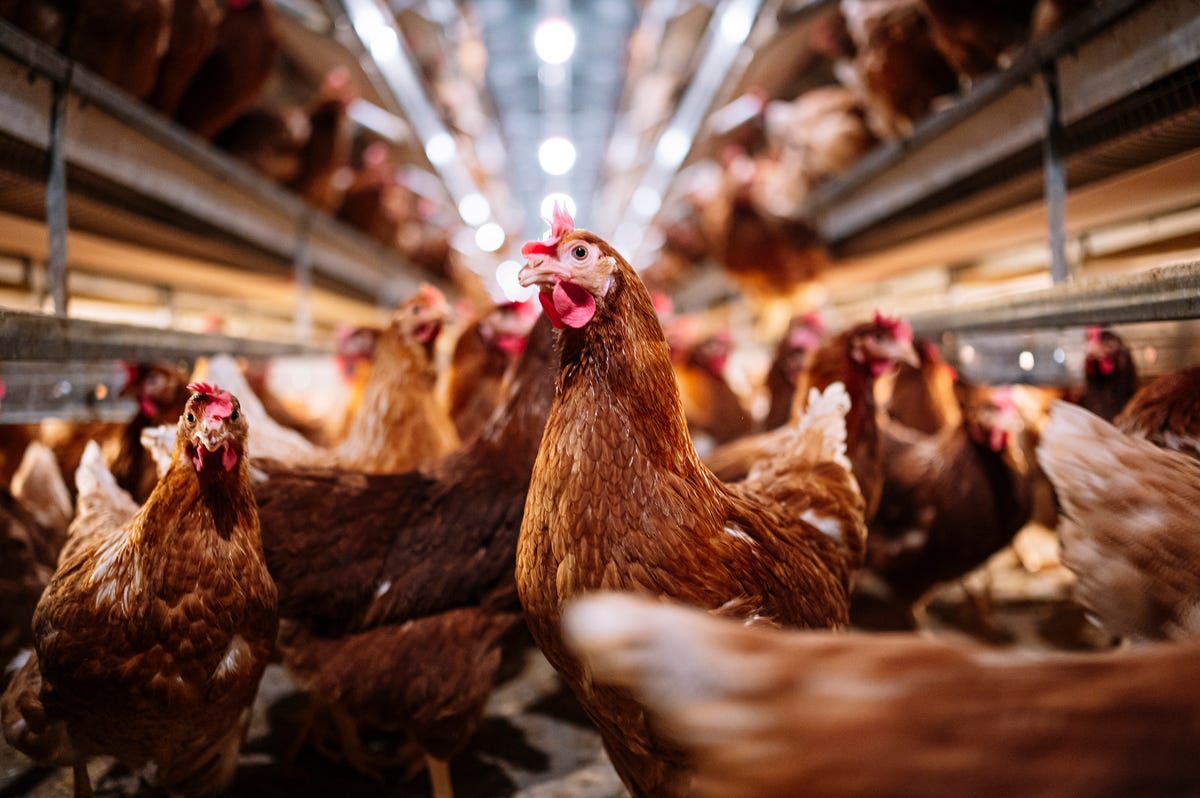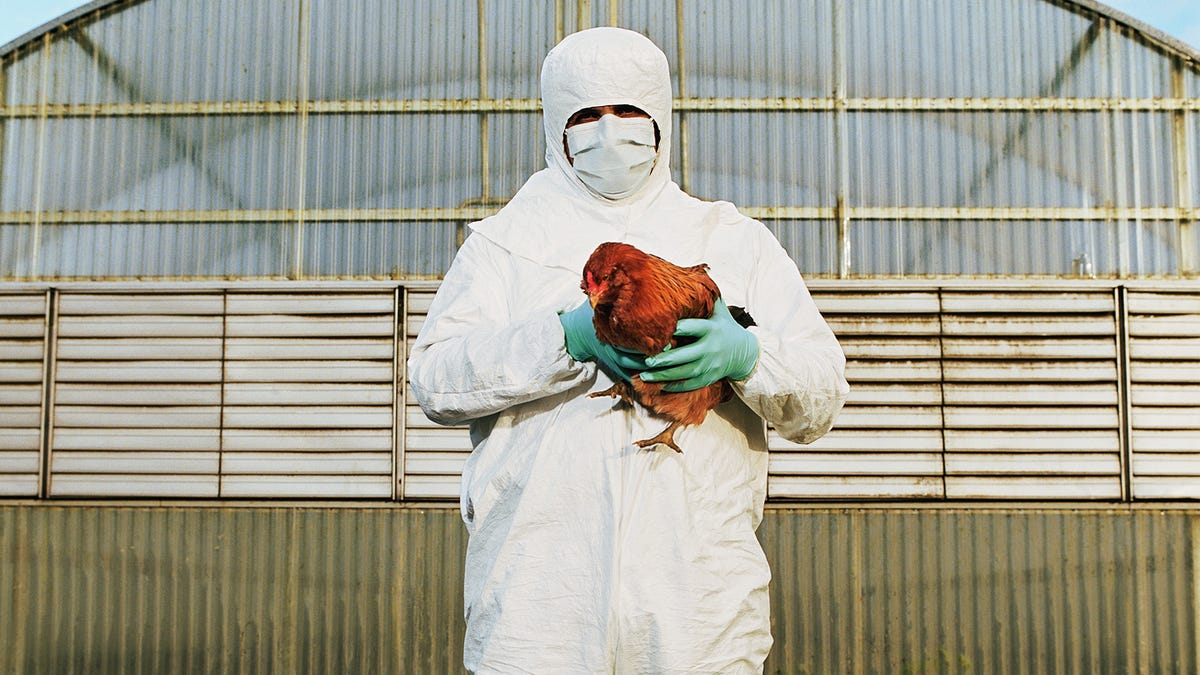[ad_1]
What began in early 2022 has turned into a persistent, and increasingly troubling, avian influenza outbreak. The threat is currently limited to poultry — affecting at least 58 million birds and sending egg prices sky high. The US Centers for Disease Control and Prevention maintains that the public health threat remains low, meaning people who don’t work or spend time with birds aren’t at risk. Those who do work around birds, including poultry workers and hunters, should take precautions, including wearing gloves and protective equipment.
Now, amid fears the virus will start spreading among people and the fact that it continues to devastate farms across the country, US government officials are considering vaccinating poultry, according to a report by The New York Times. A mass bird flu vaccination campaign targeting poultry would be a first in the US, the Times reports, but some tests on potential poultry vaccines are underway.
“There are a range of options the United States regularly considers when there is any outbreak that could affect the security and safety of the United States’ food supply,” a spokesperson for the National Security Council told CNET. “Right now, we are focused on promoting and enhancing high-impact biosafety practices and procedures.”
As long as animals and humans live, work and gather around each other, there will be a risk of viruses mutating enough to make the jump from species to species. Fortunately, bird flu in humans so far has been rare, in part because the virus doesn’t spread that easily from animals to humans, or between humans. Recently, two family members contracted bird flu in Cambodia, and one of them died. The CDC said in an early March memo that both of these cases likely resulted from bird-to-human contact near the shared household, and that there’s no evidence of human-to-human spread right now. There’s also been one human case in the US, in someone who had direct contact with birds. (This US case also might be result of the virus contaminating the nasal passages, rather than causing an actual infection.)
Still, some “sporadic” human cases of bird flu in the US “would not be surprising,” given the number of birds that are sick as well as infections in people in other countries who’ve had exposure to avian influenza, the CDC said in a November statement. But the fact that bird flu continues to spread widely and expose more species to the virus keeps the door cracked for the virus to adapt to spread human to human. If, or when, bird flu starts spreading person to person will spell trouble, according to Dr. Meg Schaeffer, an epidemiologist and the national public health adviser for SAS Institute, a data analytics firm.
“The concerning factors are that it continues to spread — so that’s one issue, because the more activity you have, the more likelihood there is for the virus to spread from animals to people,” said Schaeffer, who works with public health data modernization, including some work with the CDC and the US Department of Agriculture. Even more troublesome, she said, is that scientists might not be able to quickly catch it if it’s spread outside where avian influenza is currently monitored, in people who respond to sick poultry, meaning:
“It is likely that that would start to occur before we would know it.”
Here’s what to know about bird flu, or avian influenza.
What is bird flu?
Bird flu, aka avian influenza, is a disease caused by infection with influenza type A viruses. These viruses can circulate among birds around the world and have infected humans in rare cases, mostly those who work directly with infected birds. If the viruses mutate enough, the public health fear is that they might make the jump to spread among humans. Bird flu was first detected and controlled in 1997, but it reemerged in 2003 and started spreading widely among birds.
The predominant bird flu virus in the world is H5N1, according to the CDC. Since 2003, more than 880 human cases of earlier strains of H5N1 have been reported in humans.
Influenza viruses that cause the bird flu are either “low pathogenic” or “highly pathogenic.” Highly pathogenic bird flu can cause severe disease or death in poultry, and it’s those cases that the USDA is reporting. Both low and highly pathogenic viruses have caused mild to severe disease in infected humans.
The World Health Organization reports four types of influenza viruses: A, B, C and D. Type A viruses, which occur in both humans and different kinds of animals, are the biggest threat to public health and can cause pandemics, the WHO says. The “swine flu” of 2009’s pandemic was caused by a type A virus. Seasonal flu viruses in humans are caused by type A and type B viruses.

Getty Images
Is it deadly?
Though human cases remain rare, about half of previous H5N1 human infections have resulted in death, the CDC said. But as the agency noted in its April statement on the human case of bird flu, the current H5N1 appears different than earlier strains.
But because of the potential for a serious health threat, the WHO, CDC and USDA are closely monitoring outbreaks in the US and in other countries. The CDC has said it has “produced a candidate vaccine virus,” if it’s needed, in response to a potential public health threat.
Where is it in the US? How is it being monitored?
The bird flu has been detected and reported by the USDA in wild and domestic birds in most US states — 46, as of the CDC’s early November announcement.
Henry Niman, a biochemist in Pittsburgh, has been tracking the outbreak (as reported by The New York Times), and his map offers a visual representation of the outbreak across the country.
The first case was in a wild bird in South Carolina. Other cases were reported in some backyard flocks as well as some poultry farms, where animals are raised commercially for food. Any birds of the flocks that have cases of avian flu will not enter the food system, the USDA said.

Karen Moskowitz/Getty Images
Can people catch bird flu? Here are the precautions to take
Birds can shed avian influenza virus in their saliva, feces and mucus, according to the CDC. Humans can get sick by breathing in the virus, or by touching their eyes, nose or mouth. Most human bird flu cases have been reported in people who work directly with birds.
To avoid getting sick, avoid contact with wild birds, don’t touch dead or sick birds you see, and avoid visiting bird markets or farms if you’re traveling to another country, according to the CDC.
Extra precautions or monitoring may be taken if you work directly with birds, if you hunt birds or if you’re a health care worker. If you have contact with an infected bird, contact your local or state health department. Here’s a directory of local health departments in the US.
To avoid contamination from poultry of any kind, make sure to properly handle your poultry and eggs, and thoroughly cook them to 165 degrees Fahrenheit, the USDA says, to kill bacteria and viruses.
You can also report a dead bird to your local health department or wildlife agency, which will help public health officials track not only the bird flu but also viruses such as West Nile virus. Reporting dead birds might be especially important if you see more than one of them.
The information contained in this article is for educational and informational purposes only and is not intended as health or medical advice. Always consult a physician or other qualified health provider regarding any questions you may have about a medical condition or health objectives.
[ad_2]
